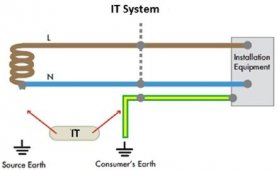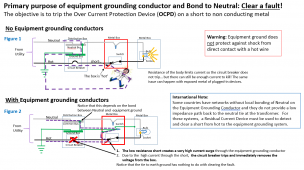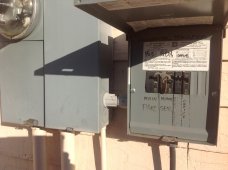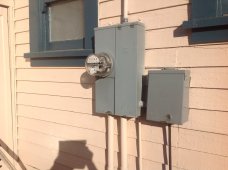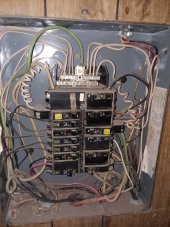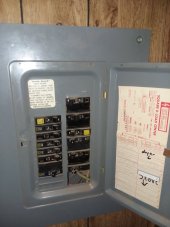@roadrunner
please tell me just what kind of main panel feeds your mobile home....I need the brand, type, meter/main combo, or subpanel and breaker spaces. I just may have a fix that will do this. Square D makes a small panel which can be equipped as a transfer panel that will meet the codes and prevent the hazard of acidentally having both sources on at the same time.
The panel is the Square D “QO” line QO 8-16L100 . this panel can be equipped with two main breakers that are toggled togather so only one source can be switched on. There is some special hardware to accomplish this including a toggle that interlocks the two breakers and two breaker lockdowns that are required when backfeeding the breakers.
There are two ways to do this, one is to power up a few circuits from the auxillary subpanel the QO8-16L100
for this method you would mount this panel next to your existing main in the mobile home and route all the nessecary circuits to this panel, one of the backfed mains will be fed from the existing panel and the other will be fed from your generator or off grid inverter. That occupies the left most 4 spaces with two QO 2 pole main breakers, that leaves the right 4 spaces open to use 4 ea QO twin breakers such as the QOT1515 or QOT2020 giving you 8 circuits that can be powered by the POCO or your standby power source or you could use single circuit distribution breakers such as the QO 115 or QO 120, one pole 15 or 20 amp breakers. All of the circuits in the original distribution panel will be powered only by the POCO, all of the circuits in the QO transfer panel can be powered by the POCO or by your standby source.
Second method.....install this QO panel in the circuit between the meter main that feeds the mobile home and the mobile home distribution panel. Remove the feed wires L1&L2 only from the existing distribution panel and connect the POCO feed to one of the main breakers in the “transfer panel” back feeding that breaker......the input goes to what would be the output side of the breaker.....hence “back-feeding the breaker” the inverter output goes to the other back fed main breaker, they MUST be in the left most spaces.....connect the normally input lugs (which now becomes the output of the “transfer panel” The former input lugs of the panel are now the output lugs and are wired from these lugs to the main breaker in the existing distribution panel. DISADVANTAGE OF THIS METHOD.....All use will be limited by the “transfer panel capability“ and the breakers used for the toggle interlocks
WARNING.....Do exactly what i say and you will be safe and within code....Square D has CERTIFIED this panel for backfeeding and offer it in their catalogue. VERY FEW PANELS CAN BE BACKFED THIS WAY....
Square D calls this a “generator transfer panel” and market it with the breaker lockdowns and the toggle lockout mechanism, you will not find the whole assembled panel at Home Cheepo or any normal retailer, its a supplier item
I will include a few photos of an installation that i did in a farmhouse turned into a farm office where the computers must be on 24/7/365 for product tracking. There are also UPS power supplies that keep us powered up before the transfer
The panel on the left is a Square D Homeline 125 amp 20/40 space panel and the small panel on the right is the QO8-16L100 panel.
DISCLOSURE.......Im doing commercial electrical work and am a Square D stocking installer of Schneider Electric including the Square D division, i have information that they do not release to the public.
If you have any questions at all about this procedures PLEASE ASK....im too old to explain why i let you do it wrong...
im very conservative in my electrical work and have never had a system failure and its way too late now to start doing that.....
David
EDIT......i do not have any affiliation with Schneider’s Solar division so please dont ask me about the Solar divisions activities.......Im in the Commercial/Industrial division



